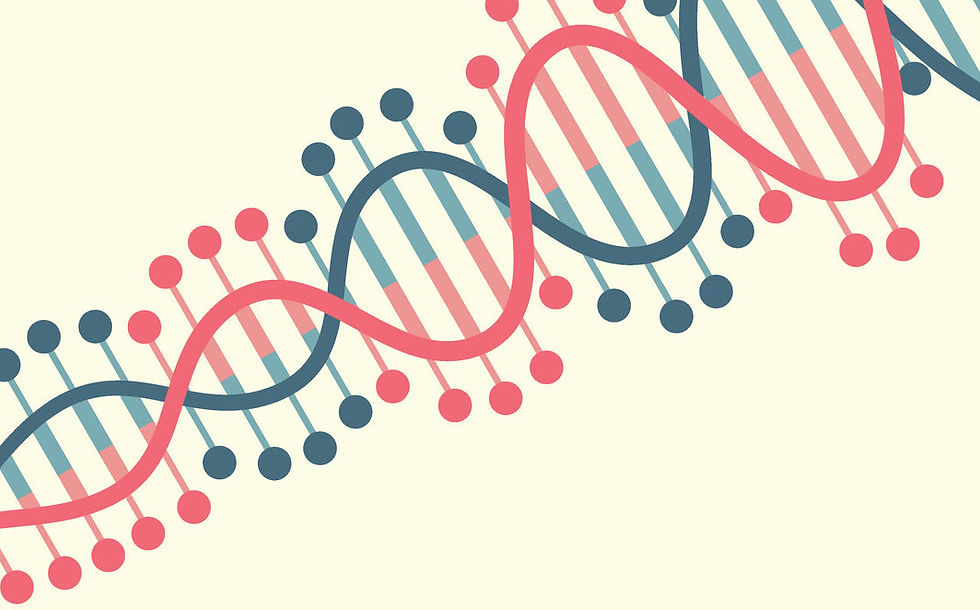Different hair types
- Nasreen
- May 1, 2020
- 2 min read
Updated: May 14, 2020
Hair is made up of keratin, a protein also found in our nails and skin.
If the hair is basically keratin for everyone, then why does each one of us have different hair types?

But first, did you know that the hair you can see is the 'dead' hair shaft? It arises from the 'living' hair follicle that remains buried under the scalp and skin. If you have ever plucked your hair, then you must have observed a white, swollen matter at the root end of the hair. That is the hair follicle.
Whether one has curly, wavy, or straight hair depends partly on the shape of their hair follicle, while the thickness of each hair strand depends partly on the follicle size.

In each hair, individual keratin molecules interact with each other by forming chemical bonds, including disulphide bridges/ bonds.
When the hair follicle is flat in shape, the hair shaft arising out of it is also flat. The flat shape allows many disulphide bridges to form in the hair shaft and results in curly hair. As the follicle becomes less flat, the hair shaft also gets rounder. This shape limits the number of disulphide bridges that can be formed among the keratin molecules and leads to straight hair. In fact, disulphide bridges can be destroyed using heat and certain chemicals. Disruption of disulphide bridges promotes straighter hair and is the principle behind artificial hair straightening.
But, can the human body be so simple? It is well known that hair type varies not only from one person to another but also from population in one part of the world to another (ethnicity). This is where different genetics come into play.
While normal variations in genes for hair structure and stability are responsible for the ethnic differences in hair type, certain harmful mutations in the genes can result in excessive hair growth (Ambras syndrome, historically known as 'werewolf' syndrome), baldness or hair loss (androgenetic alopecia) as well as defective eyesight and abnormal teeth development (ectodermal dysplasia).
An interesting example of genetic influence on hair is uncombable hair syndrome, a rare condition resulting from mutations in genes that decide hair shaft formation. It is characterized by hair that grows in multiple directions and is difficult to comb flat, resulting in hair similar to that of Einstein! Don't believe me? Then look it up!
Sources and further reading:
Cover image: Two girls with curly and straight hair by Ruchi Shah, for Curly and Straight written by Radha HS, supported by Parag: A Sir Ratan Tata Trust Initiative, published by Pratham Books (©Pratham Books, 2010) under a CC BY 4.0 license on StoryWeaver. Read, create and translate stories for free on www.storyweaver.org.in
Straight vs curly (https://www.bio.davidson.edu/courses/genomics/2011/Piper/Background.html).
The Science of Curls (https://helix.northwestern.edu/blog/2014/05/science-curls).
Gillian E Westgate, Natalia V Botchkareva, Desmond J Tobin. The biology of hair diversity. International Journal of Cosmetic Science, 32 (4), 329-336 (2013). (https://onlinelibrary.wiley.com/doi/full/10.1111/ics.12041)
Yutaka Shimomura1and Angela M. Christiano. Biology and Genetics of Hair. Annual Review of Genomics and Human Genetics, 11 (1),109-132 (2010). (https://www.annualreviews.org/doi/full/10.1146/annurev-genom-021610-131501#_i5)
Uncombable hair syndrome (https://rarediseases.info.nih.gov/diseases/5404/uncombable-hair-syndrome)





Comments